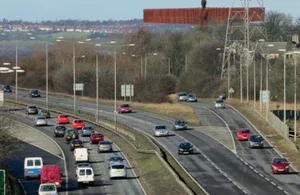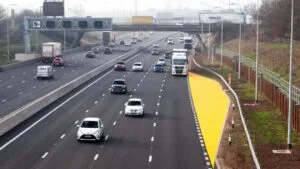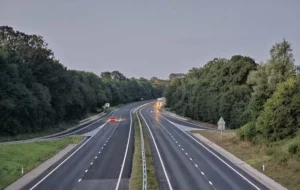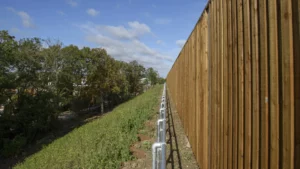Highways England’s roads continued to show large differences in regional performance in 2019-20, according to a report by the Office of Rail and Road.
User satisfaction and average traffic delays across six regions of England varied significantly, but performance was more aligned in supporting the smooth flow of traffic and the condition of the road network, where each region improved.
Evidence of regional differences is provided in ORR’s Benchmarking Highways England: 2020 Progress Report, which examined Highways England’s performance across: Yorkshire and the North East, North West, Midlands, East, South East and South West of England regions against key metrics including user satisfaction, network availability, incident clearance, average traffic delay and road condition.
The report shows:
- User satisfaction varies significantly across Highways England’s regions and scores can fluctuate from year to year. National user satisfaction was 89% in 2019-20, slightly below the 90% target. Regional levels ranged from 93% in Yorkshire and the North East to 85% in the North West.
- Average traffic delay: Nationally average traffic delay in 2019-20 was nine seconds per vehicle mile. There was a difference in average delays of three seconds per mile (38%) between the region with the highest level of delays (South East) and the region with the lowest level of delays (South West).
- Road condition: Highways England aims to keep 95% of its road surface in a good condition. The condition of the road network improved in every region, ranging from Yorkshire and the North East ensuring 97% of the network did not require further investigation to the Midlands and the East of England, which achieved 94%.
- Network availability: Each region ensured that at least 98% of the network was open and available for traffic, with all regions performing at a similar level (98%) with the South West achieving a score of 99%.
- Clearing incidents: All regions significantly improved performance in the way that they deal with traffic incidents. Nationally, Highways England increased the proportion of incidents cleared to 89% in 2019-20. Regional performance ranged from 88% in the East to 90% in the Midlands.
- Maintenance and renewal spending: Nationally, there was a gradual reduction in maintenance spending during the first road period (2015-2020). The Midlands region had the highest average spending per lane mile – 17% more than the South West. By its nature renewals spending fluctuated to a greater extent than maintenance but regional variation reduced significantly by the end of the period.
- International comparisons: In the 2020 progress report, ORR benchmarked fatality rates on motorways across a selection of European countries. This shows that the rate of fatalities (deaths per vehicle mile) is low in England compared to other European countries. It also shows similarities in longer term trends in motorway fatalities. Most countries saw large reductions in fatalities during the 2000’s. However, in the last 10 years the number of fatalities on motorways has levelled off.
Variation across regions may be explained by differences in network characteristics, particular circumstances faced by a region, or differences in approach or performance.
ORR will be requiring Highways England to provide better cost and spending data at regional level in respect of operations, maintenance, and renewals to provide greater transparency and help to better understand whether differences over time and between regions reflect more efficient delivery.
Graham Richards, Director of Planning and Performance at the Office of Rail and Road, said: “Our benchmarking report paints a generally positive picture of Highways England’s regional performance over the last five years but it is also important to understand differences and variations across the country. This can help identify further opportunities to improve performance and efficiency.
“As more data becomes available our benchmarking and scrutiny of Highways England will evolve. Over the coming year we plan to broaden our work and look more specifically at road condition comparators, as this is important for road users.”



























